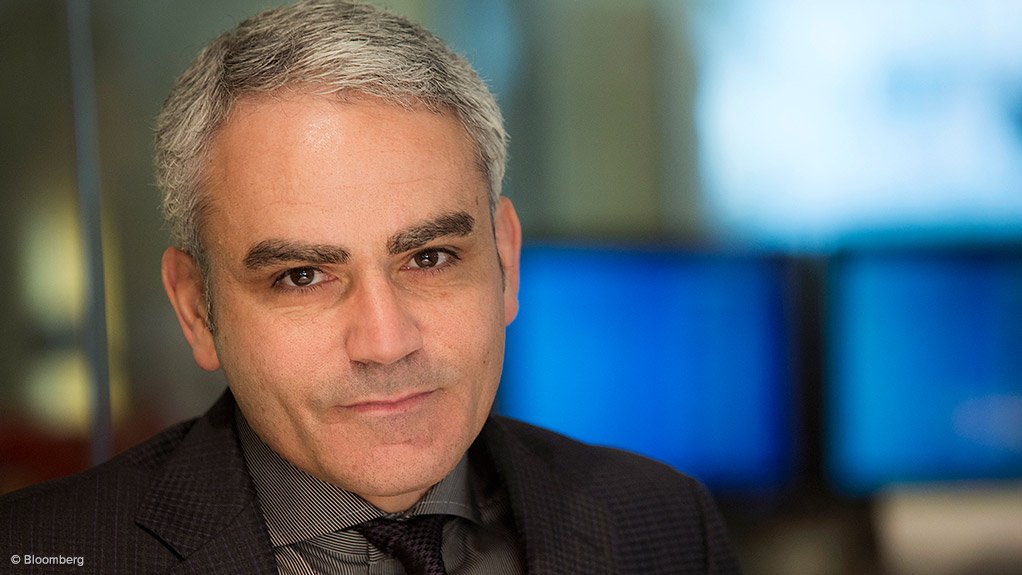VANCOUVER (miningweekly.com) – The reserves of the world’s top-producing gold miners have decreased by about one-third over the last five years, a situation that has to be reversed if the industry is to maintain its attractiveness to investors, Goldcorp president and CEO David Garofalo said Monday.
Delivering a keynote address at the British Columbia Association for Mineral Exploration’s 2017 Roundup event, in Vancouver, on Monday, he stressed the need for majors to invest in grassroots exploration to feed their future project pipelines.
“The majors don’t want to take on the risk of greenfields exploration anymore, but will have to partner a lot more, even among seniors. Two heads are better than one, while two balance sheets are better than one to build mines that cost more and are more complex to build.
“We have to start today to reverse this downward trend, as the time it takes from discovery to mine is increasing to a minimum of a decade these days,” he said.
EXPLORATION BY PROXY
The heavy lifting is being done by juniors, Garofalo said.
While the low-hanging fruit has been picked, the industry needs to look at the growth proposition in terms of reserves and investor returns to remain sustainable in today’s volatile environment, he said.
Garofalo, which has been involved in the development of 13 mines during his career, stressed that Goldcorp is and will remain an Americas-focused major, deferring to junior explorers to generate new projects.
“Exploration requires a different skill set than building and operating mines. You should partner with 15 to 20 juniors to successfully cultivate grassroots options over time to fill the pipeline.
“Partnerships with juniors are invaluable to us to feed our pipeline. You’ll see Goldcorp people everywhere at the conference – we are actively looking to get more projects into our pipeline,” Garofalo stated.
He outlined Vancouver-based Goldcorp’s preference for large long-life projects with five-million to ten-million ounces in the ground, that are able to sustain operations of at least 400 000 oz/y to fit its strategic vision and move the needle forward in terms of value creation. District-scale operations pique Goldcorp’s interest – something it found in buying Kaminak Gold and its Coffee project last year, and at the NuevaUnión project, where it has partnered with Teck Resources.
As the company is ramping up output at its recently built Cerro Negro mine, in Argentina, and its Éléonore mine in Canada, Goldcorp’s vision is to have three-million- to four-million-ounce projects from six to eight large-scale mining camps spread across the Americas, Garofalo said. In the meantime, it will continue to divest noncore assets as part of portfolio optimisation and management’s focus on scale.
Over the past several years the company has been streamlining its asset base to focus on core low-cost, high-grade mines in stable jurisdictions, divesting from noncore assets to strengthen the balance sheet.
“One wants the lowest cost structure to be the ‘last cat standing in the alley’. This means acquiring assets during down cycle. As mining at Los Filos, in Mexico, went underground, the operation did not fit Goldcorp’s low-cost portfolio any longer. Garofalo noted that the company had sold the mine and recycled dollar-for-dollar into the acquisition of Kaminak for $500-million, which coincidentally introduced an element of greenfield exploration to the company’s portfolio.
FOCUS ON GROWTH
Following the prolonged commodity downturn, Goldcorp has now repositioned itself on a growth trajectory. The major recently outlined a prodigious five-year growth profile, which will see it boost output by 20% to three-million ounces, lift gold reserves by 20% to 50-million ounces and reduce all-in sustaining costs (AISC) by 20% to $700/oz.
Garofalo noted that certain assets were excluded from these projections, with the company keeping them in the back pocket for potential future upside.
He noted that whereas most seniors have bottomed out the potential for further cost reductions, Goldcorp will be able to achieve the significant AISC reductions as it leverages economies of scale. The new reserves are expected mainly from the conversion of existing resources at the Century project, Peñasquito and Pueblo Viejo.
DISRUPTIVE MINING TECHNOLOGIES
Meanwhile, Goldcorp is focused on finding disruptive new mining technologies to further increase the bottom line.
It has partnered with Integra Gold and four of the world's largest technology companies to explore potential applications of disruptive technologies in the mining sector.
#DisruptMining is a marquee event, held during the yearly Prospectors and Developers Association of Canada conference, which will showcase disruptive and exponential technologies with the potential to revolutionise the future of mining, from exploration and discovery to production and automation to financing, marketing and corporate social responsibility.
Goldcorp has committed $1-million for a proof of concept at one of its mines for investment in the winning technologies.
Goldcorp has also launched the H2zero initiative to drive down water use and conservation at its operations, where it is targeting water use reductions of between 80% and 100%. “We call it a ‘moonshot’ and it will certainly require new technologies to achieve this, but we’ll lead the market towards our ‘toward zero water’ initiative."
The company is also introducing what it calls Eco Tails – the dry-stacking of tailings that helps to address the social image of mining and environmental concerns, while improving operating parameters.
Edited by: Chanel de Bruyn
Creamer Media Senior Deputy Editor Online
EMAIL THIS ARTICLE SAVE THIS ARTICLE
ARTICLE ENQUIRY
To subscribe email subscriptions@creamermedia.co.za or click here
To advertise email advertising@creamermedia.co.za or click here













